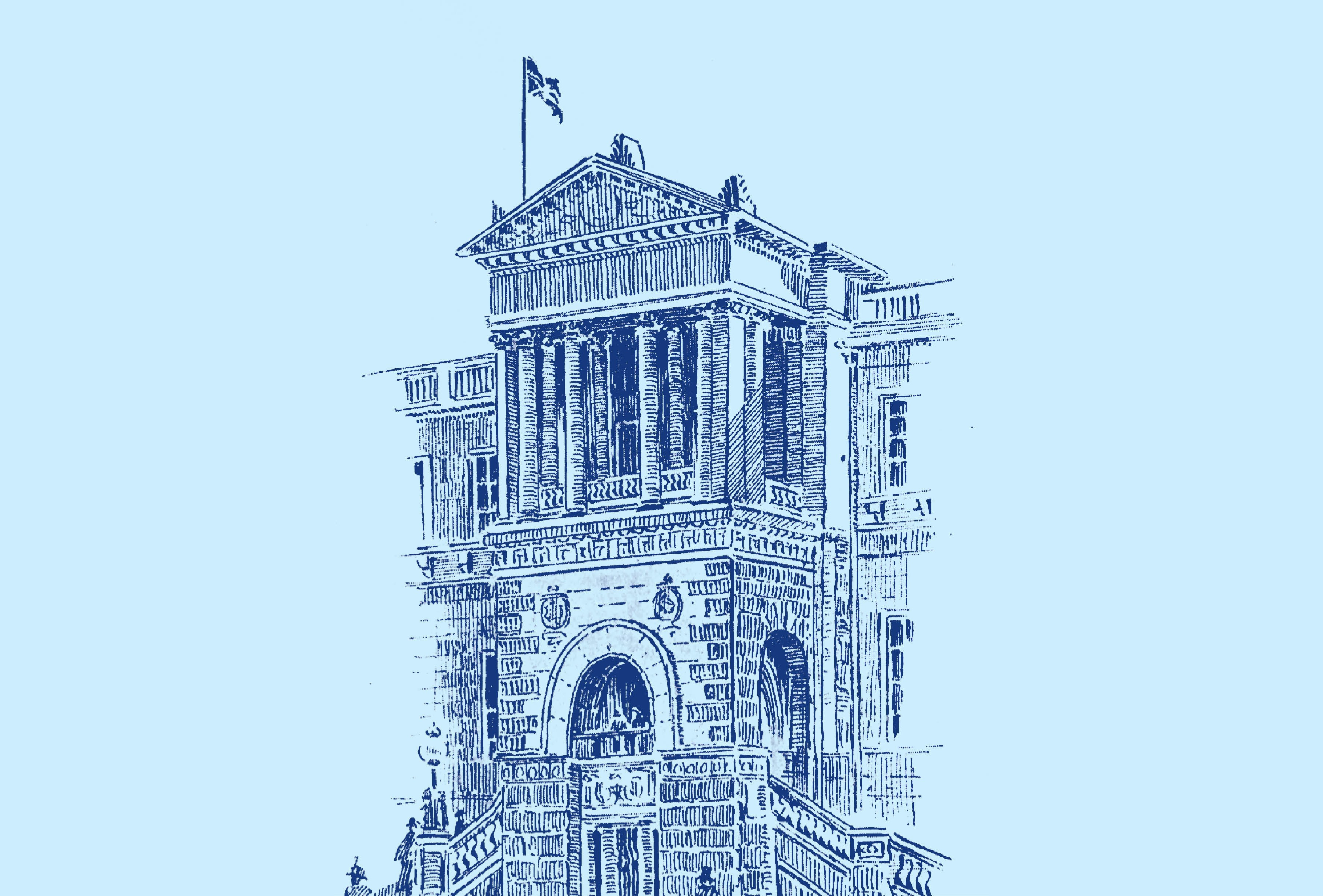Treasury is currently headquartered in the heart of government, 52 Martin Place. But it hasn’t always been that way.
The Colonial Treasury Building
Shortly into early colonial history, the first NSW Government Architect was appointed, then called the Colonial Architect. The position continues through to the current day and is charged with advising the government on public works, architecture, design, and engineering.
The fifth person to hold the position, Mortimer Lewis, was responsible for a large number of iconic (and Ionic) architecture across Sydney, including the Darlinghurst Courthouse, Australian Museum, Customs House and the red-and-white Hornby Lighthouse.
In 1849, Lewis was also commissioned to construct a grand headquarters for the Colonial Treasurer and Auditor. The single building had two entrances – one on Macquarie Street for the Treasury, and one on Bridge Street for the Audit Office.
The Macquarie Street building was constructed within the gardens of New South Wales’ First Government House – or where the Museum of Sydney currently stands.
The building was completed in stages over the next 60 years under several architects – initial construction was finished in 1851, with later stages added in 1853, 1900 and 1919. For budding architectural admirers, it is a building in two styles that were very in vogue in London at the time of respective construction: in Victorian (era) Neo-Classical (other examples include the Art Gallery of New South Wales and the Victorian (state) and South Australian Parliament Houses) and Italian Palazzo (other examples include the Gowings Building and Dymocks Building).
The Colonial Treasury Building has had a number of tenants over the years: NSW Treasury (of course), but also the NSW Police Force (and its related agencies) and the departments of Transport and Premier.
Since 1981, the building has been part of the InterContinental Hotel group, and since 1999, heritage-listed.
Last updated: 23/04/2024

